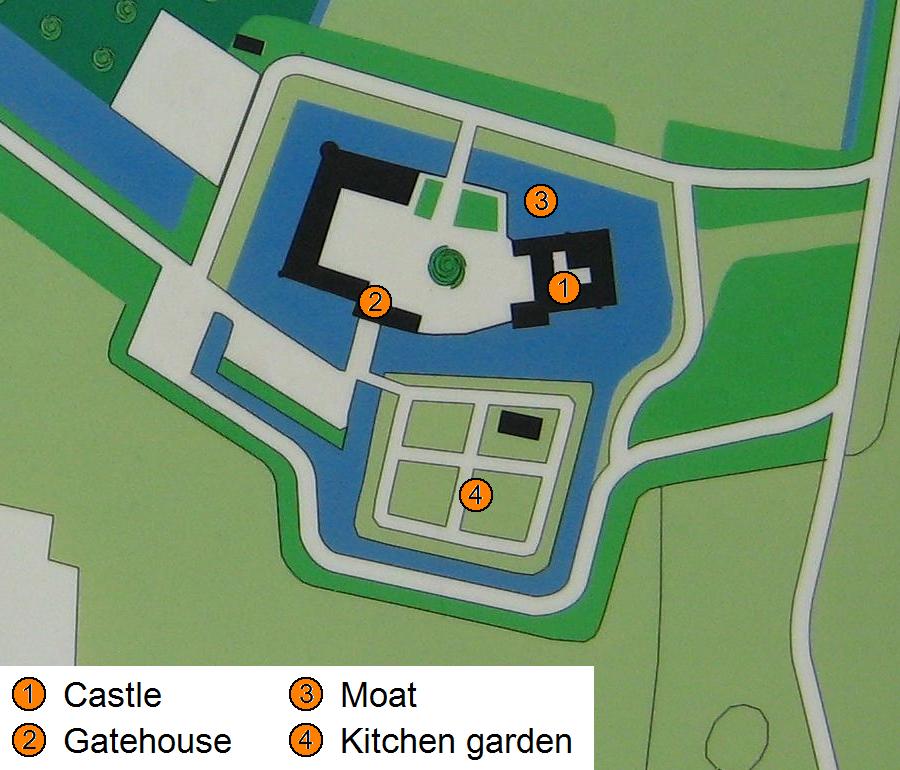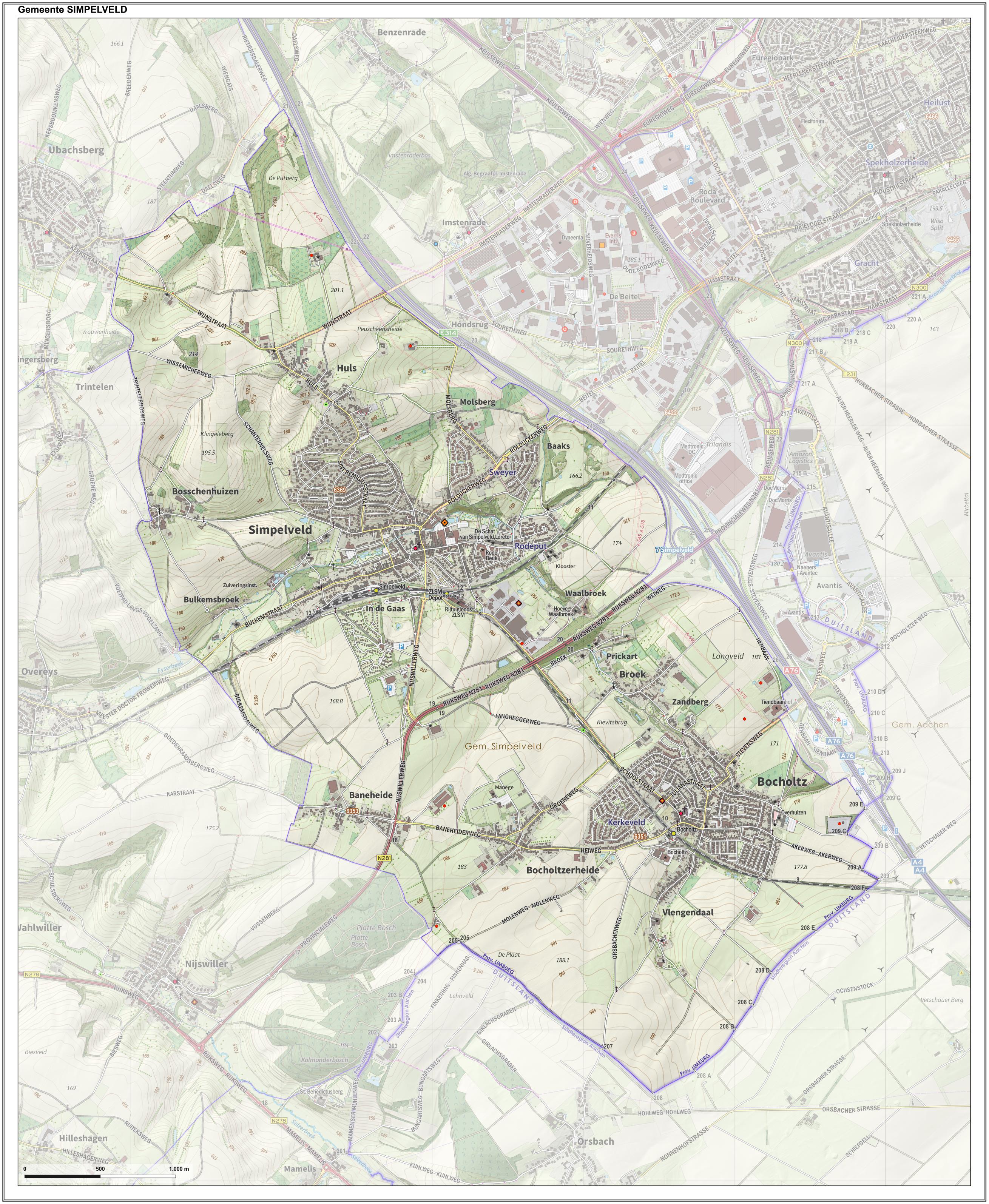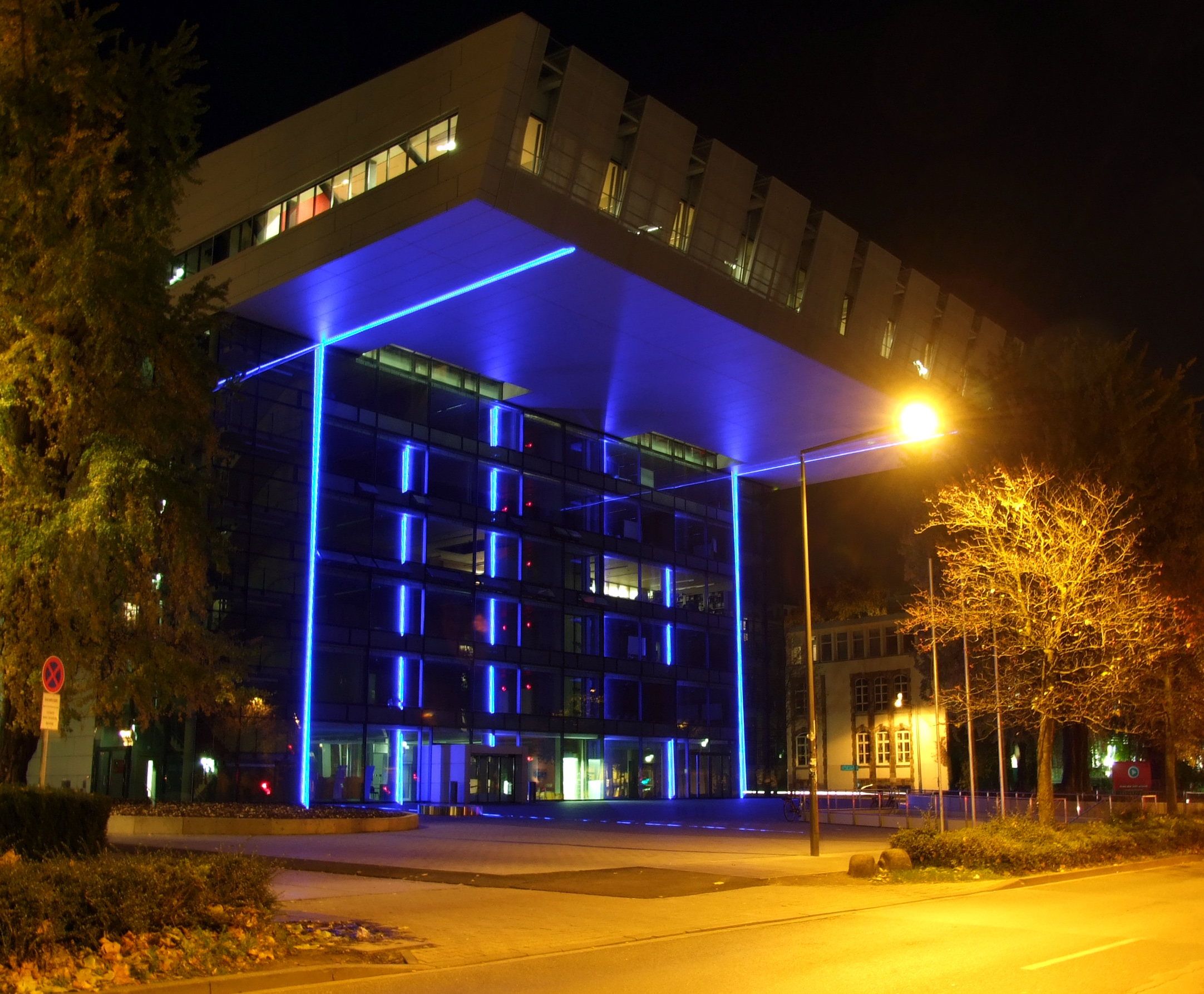|
Richterich
Richterich is a borough and northwestern suburb of Aachen, Germany. The towns of Horbach and Huf belong to the borough, which borders the other Aachen borough of Laurensberg, as well as the Kohlscheid borough of Herzogenrath. It is assumed that the histories of Richerich and Horbach go back a long time, since the name is suggestive of a Celtic settlement. In Roman times, the attested name of the area was ''recteriacum''. Buildings and history The most historically important buildings in the borough are the St. Martin Church (inaugurated 1791), the Schönau Castle (''Schloss Schönau''), and the water fortress Heyden House (''Haus Heyden''), in Horbach. St. Martin Church contains the Maaß Organ, which was built in 1836 and is the oldest organ in Aachen. Schönau Castle is today home to a restaurant and is available to residents as a cultural center and host to various events. Heyden House is now used for residential purposes. Besides a few houses from the 18th Century in the ... [...More Info...] [...Related Items...] OR: [Wikipedia] [Google] [Baidu] |
Aachen
Aachen ( ; ; Aachen dialect: ''Oche'' ; French and traditional English: Aix-la-Chapelle; or ''Aquisgranum''; nl, Aken ; Polish: Akwizgran) is, with around 249,000 inhabitants, the 13th-largest city in North Rhine-Westphalia, and the 28th-largest city of Germany. It is the westernmost city in Germany, and borders Belgium and the Netherlands to the west, the triborder area. It is located between Maastricht (NL) and Liège (BE) in the west, and Bonn and Cologne in the east. The Wurm River flows through the city, and together with Mönchengladbach, Aachen is the only larger German city in the drainage basin of the Meuse. Aachen is the seat of the City Region Aachen (german: link=yes, Städteregion Aachen). Aachen developed from a Roman settlement and (bath complex), subsequently becoming the preferred medieval Imperial residence of Emperor Charlemagne of the Frankish Empire, and, from 936 to 1531, the place where 31 Holy Roman Emperors were crowned Kings of the Germans. ... [...More Info...] [...Related Items...] OR: [Wikipedia] [Google] [Baidu] |
Aachen–Mönchengladbach Railway
The Aachen–Mönchengladbach railway is a main line in the German state of North Rhine-Westphalia. It is an important link between the Ruhr and Belgium for freight trains and is served by regional passenger trains. The line was built by the Aachen-Düsseldorf-Ruhrort Railway Company and is one of the oldest lines in Germany, which was opened between 1852 and 1854. Route The line begins in Aachen Hauptbahnhof, where it connects with the line from Liège, Belgium and with the line to Cologne. Shortly later is the Aachen Schanz station, opened in 2004. On the approach to Aachen West station is the junction with the Montzen Railway, which is exclusively used for freight trains to and from Belgium. The track runs on a high embankment through western Aachen and then through a deep cutting, which used to be the location of Richterich station, but is now a crossover only. In Richterich station there used to junction with the so-called Millions line (''Millionen linie'') to S ... [...More Info...] [...Related Items...] OR: [Wikipedia] [Google] [Baidu] |
Laurensberg
Laurensberg is a quarter (''Stadtteil'') and borough ('' Stadtbezirk'') of Aachen, Germany. As a borough, Laurensberg includes, in addition to Laurensberg itself, Orsbach, Seffent, Soers, Vaalserquartier and Vetschau, as well as the residential areas of Gut Kullen and Steppenberg. Laurensberg is the largest district of Aachen by area. The borough borders other Aachen city boroughs Haaren, Aachen-Mitte and Richterich and the German communities of Kohlscheid (which is part of Herzogenrath) und Würselen (both of which belong to the district of Aachen, which is distinct from the city). Beyond the German border, the borough borders the Belgian town of Kelmis, in the Province of Liège, as well as the Dutch communities of Vaals, Gulpen-Wittem and Simpelveld, all contained with the Dutch Province of Limburg. The borough Laurensberg covers 2,997 hectares and has 20,381 inhabitants (as of 2020). The borough is characterized by its wide hilltop views and its interesting (from an art ... [...More Info...] [...Related Items...] OR: [Wikipedia] [Google] [Baidu] |
Germany
Germany,, officially the Federal Republic of Germany, is a country in Central Europe. It is the second most populous country in Europe after Russia, and the most populous member state of the European Union. Germany is situated between the Baltic and North seas to the north, and the Alps to the south; it covers an area of , with a population of almost 84 million within its 16 constituent states. Germany borders Denmark to the north, Poland and the Czech Republic to the east, Austria and Switzerland to the south, and France, Luxembourg, Belgium, and the Netherlands to the west. The nation's capital and most populous city is Berlin and its financial centre is Frankfurt; the largest urban area is the Ruhr. Various Germanic tribes have inhabited the northern parts of modern Germany since classical antiquity. A region named Germania was documented before AD 100. In 962, the Kingdom of Germany formed the bulk of the Holy Roman Empire. During the 16th ce ... [...More Info...] [...Related Items...] OR: [Wikipedia] [Google] [Baidu] |
Herzogenrath
Herzogenrath ( Ripuarian: ; li, Hertseraoj; nl, ’s-Hertogenrade) is a municipality in the district of Aachen in the German state of North Rhine-Westphalia. It borders the Dutch town of Kerkrade, the national border in one section running along the middle of a main road and even directly through the centre of the cross-border Eurode office complex. History Herzogenrath began in the 11th century as a settlement called ''Rode'' near the river Wurm. In 1104, Augustinian monks founded an abbey, called ''Kloosterrade'', to the west of this settlement. It became s-Hertogenrode or s-Hertogenrade (Dutch: ''the Duke's Rode'') after the Duchy of Brabant took control of the region; in French it was called Rolduc (''Rode-le-Duc''). As is the case for many parts of Duchy of Brabant, Herzogenrath changed hands several times in the last few centuries. Together with the rest of the Southern Netherlands, it was under Spanish control from 1661, Austrian between 1713 and 1795 and French be ... [...More Info...] [...Related Items...] OR: [Wikipedia] [Google] [Baidu] |
Celts
The Celts (, see pronunciation for different usages) or Celtic peoples () are. "CELTS location: Greater Europe time period: Second millennium B.C.E. to present ancestry: Celtic a collection of Indo-European peoples. "The Celts, an ancient Indo-European people, reached the apogee of their influence and territorial expansion during the 4th century bc, extending across the length of Europe from Britain to Asia Minor."; . " e Celts, were Indo-Europeans, a fact that explains a certain compatibility between Celtic, Roman, and Germanic mythology."; . "The Celts and Germans were two Indo-European groups whose civilizations had some common characteristics."; . "Celts and Germans were of course derived from the same Indo-European stock."; . "Celt, also spelled Kelt, Latin Celta, plural Celtae, a member of an early Indo-European people who from the 2nd millennium bce to the 1st century bce spread over much of Europe."; in Europe and Anatolia, identified by their use of Celtic langua ... [...More Info...] [...Related Items...] OR: [Wikipedia] [Google] [Baidu] |
Ancient Rome
In modern historiography, ancient Rome refers to Roman civilisation from the founding of the city of Rome in the 8th century BC to the collapse of the Western Roman Empire in the 5th century AD. It encompasses the Roman Kingdom (753–509 BC), Roman Republic (509–27 BC) and Roman Empire (27 BC–476 AD) until the fall of the western empire. Ancient Rome began as an Italic settlement, traditionally dated to 753 BC, beside the River Tiber in the Italian Peninsula. The settlement grew into the city and polity of Rome, and came to control its neighbours through a combination of treaties and military strength. It eventually dominated the Italian Peninsula, assimilated the Greek culture of southern Italy ( Magna Grecia) and the Etruscan culture and acquired an Empire that took in much of Europe and the lands and peoples surrounding the Mediterranean Sea. It was among the largest empires in the ancient world, with an estimated 50 to 90 million inhabitants, roughly 20% of t ... [...More Info...] [...Related Items...] OR: [Wikipedia] [Google] [Baidu] |
Water Castle
A water castle is a castle whose site is largely defended by water. It can be entirely surrounded by water-filled moats (moated castle) or natural waterbodies such as island castles in a river or offshore. The term comes from European castle studies, mainly German ''Burgenkunde'', but is sometimes used in English-language popular science books and websites, and is mentioned in other more academic works. When stately homes were built in such a location, or a Wasserburg was later rebuilt as a residential manor, the German term becomes Wasserschloss, lit. "water palace/manor". Description Forde-Johnston describes such a site as "a castle in which water plays a prominent part in the defences." Apart from hindering attackers, an abundant supply of water was also an advantage during a siege. Topographically, such structures are a type of lowland castle, low-lying castle. Such a castle usually had only one entrance, which was via a drawbridge and that could be raised for protection in ... [...More Info...] [...Related Items...] OR: [Wikipedia] [Google] [Baidu] |
Middle Ages
In the history of Europe, the Middle Ages or medieval period lasted approximately from the late 5th to the late 15th centuries, similar to the post-classical period of global history. It began with the fall of the Western Roman Empire and transitioned into the Renaissance and the Age of Discovery. The Middle Ages is the middle period of the three traditional divisions of Western history: classical antiquity, the medieval period, and the modern period. The medieval period is itself subdivided into the Early, High, and Late Middle Ages. Population decline, counterurbanisation, the collapse of centralized authority, invasions, and mass migrations of tribes, which had begun in late antiquity, continued into the Early Middle Ages. The large-scale movements of the Migration Period, including various Germanic peoples, formed new kingdoms in what remained of the Western Roman Empire. In the 7th century, North Africa and the Middle East—most recently part of the Eastern Ro ... [...More Info...] [...Related Items...] OR: [Wikipedia] [Google] [Baidu] |
Simpelveld
Simpelveld (; li, Zumpelveld ) is a municipality and a town in the southeastern Netherlands. It is part of the municipal cooperative unit Parkstad Limburg. Simpelveld is part of the ''Mergelland'', named after the presence of chalk (mergel), hill country popular with tourists. The Mergellandroute passes through the town. The population centre of Simpelveld has 28 national monuments, amongst which are the Oude Molen and the Saint Remigius Church. Simpelveld has a heritage railway station and is the home base of the South Limburg Railway Company. On one weekend in October there is a Day out with Thomas from the children's television series Thomas and Friends. Population centres *Bocholtz *Simpelveld Besides these official centres there are other hamlets which fall under the municipality: Religion The municipality has two churches within its borders: *James the Greater Church in Bocholtz *Saint Remigius Church in Simpelveld The city also has two monasteries, these are ... [...More Info...] [...Related Items...] OR: [Wikipedia] [Google] [Baidu] |
Kindergarten
Kindergarten is a preschool educational approach based on playing, singing, practical activities such as drawing, and social interaction as part of the transition from home to school. Such institutions were originally made in the late 18th century in Germany, Bavaria and Alsace to serve children whose parents both worked outside home. The term was coined by German pedagogue Friedrich Fröbel, whose approach globally influenced early-years education. Today, the term is used in many countries to describe a variety of educational institutions and learning spaces for children ranging from 2 to 6 years of age, based on a variety of teaching methods. History Early years and development In 1779, Johann Friedrich Oberlin and Louise Scheppler founded in Strasbourg an early establishment for caring for and educating preschool children whose parents were absent during the day. At about the same time, in 1780, similar infant establishments were created in Bavaria. In 1802, Princess P ... [...More Info...] [...Related Items...] OR: [Wikipedia] [Google] [Baidu] |
RWTH Aachen University
RWTH Aachen University (), also known as North Rhine-Westphalia Technical University of Aachen, Rhine-Westphalia Technical University of Aachen, Technical University of Aachen, University of Aachen, or ''Rheinisch-Westfälische Technische Hochschule Aachen'', is a German public research university located in Aachen, North Rhine-Westphalia, Germany. With more than 47,000 students enrolled in 144 study programs, it is the largest technical university in Germany. In 2018, the university was ranked 31st in the world university rankings in the field of engineering and technology, and 36th world-wide in the category of natural sciences.Daten & Fakten – RWTH AACHEN UNIVERSITY – Deutsch Rwth-aachen.de (12 December 2011). Retrieved on 2013-09-18. [...More Info...] [...Related Items...] OR: [Wikipedia] [Google] [Baidu] |


.jpg)




.jpg)
